Kazakhstan tourism Printable version
Last update: 12.04.2023Kazakhstan is a unique country that combines ancient traditions and contemporary specifics. Tourism has broad prospects in Kazakhstan, one of the reasons for that lies in its geographical and natural environment.
In the summer period, Kazakhstan citizens may recreate in the following places of resort:
Alakol Lake
 Ala Kol (“Multi-colored Lake”) is one of the rarest lakes in Kazakhstan. It is located in the south-east part of the country, at Kazakhstan-China border. The lake’s shore is covered with unique black therapeutic pebbles. Ala Kol’s water has the same structure as sea water, i.e. sodium sulfate chloride. The water is warm, with average summer temperature being +26 degrees. It is helpful in curing skin diseases, such as psoriasis, eczema, neurodermatitis, urticarial. As practices prove, it renders good therapeutic effect on arthritis and neurological disorder. The lake’s marvelous waters improve human general physical status as well.
Ala Kol (“Multi-colored Lake”) is one of the rarest lakes in Kazakhstan. It is located in the south-east part of the country, at Kazakhstan-China border. The lake’s shore is covered with unique black therapeutic pebbles. Ala Kol’s water has the same structure as sea water, i.e. sodium sulfate chloride. The water is warm, with average summer temperature being +26 degrees. It is helpful in curing skin diseases, such as psoriasis, eczema, neurodermatitis, urticarial. As practices prove, it renders good therapeutic effect on arthritis and neurological disorder. The lake’s marvelous waters improve human general physical status as well.
Along the lake there are dozens of recreation centers and boarding houses offering good conditions for a coastal family vacation.The distance from the big cities plays a role as well. The road from Almaty by bus or car takes 9-10 hours. The road to the station of Koktuma by a special charter train, which runs in the season from May to August, takes 16 hours.
Borovoye (Burabai) resort zone
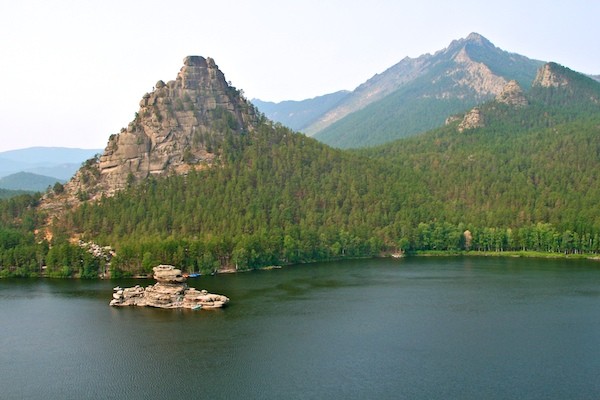 For the gorgeous landscape, abundant lakes, and rich vegetable kingdom and wildlife, Borovoye was given a poetic name – “Kazakhstan’s Pearl”. The central part of Kokshetau highland is occupied by Kokshetau mountains whose maximum height reaches 947 m above sea level.
For the gorgeous landscape, abundant lakes, and rich vegetable kingdom and wildlife, Borovoye was given a poetic name – “Kazakhstan’s Pearl”. The central part of Kokshetau highland is occupied by Kokshetau mountains whose maximum height reaches 947 m above sea level.
Borovoye is a land of health resorts, rest and recreation facilities, vacation retreats, and sports & health camps. Dozens of thousands people come here from various places in Kazakhstan and CIS countries to improve their health, get acquainted with nature, and relax. In Borovoye, the diseases of respiratory system, gastrointestinal tract, cardiovascular system, and locomotor system are treated. Borovoye is famous for fermented mare-milk, healing muds, and mineral water. What is especially good here is the air smelling of steppe herbs and pine forest. Bathing suit season starts in June. You can get to Borovoye by train and by bus, the railway station and the bus station are in the town of Shchuchinsk, 25 km from Borovoe.
Balkhash Lake
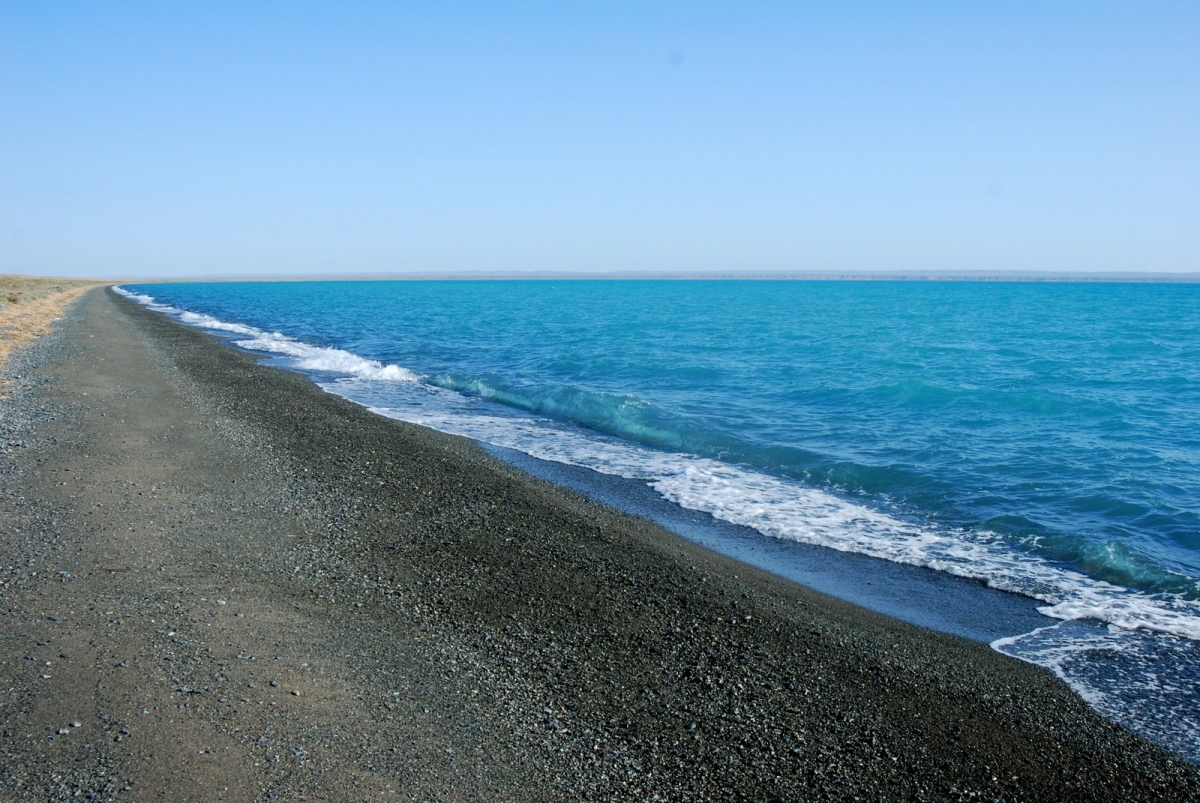 Balkhash is an astatic semi-freshwater lake in the eastern part of Kazakhstan located across three regions – Almaty, Zhambyl and Karaganda; the world’s second large salty lake (after Caspian Sea) and the 13th in the list of the world’s largest lakes.
Balkhash is an astatic semi-freshwater lake in the eastern part of Kazakhstan located across three regions – Almaty, Zhambyl and Karaganda; the world’s second large salty lake (after Caspian Sea) and the 13th in the list of the world’s largest lakes.
The lake is unique for its being divided by narrow channel into two parts that differ in chemical characteristics of water: it is virtually fresh in western part and saltish – in eastern one.
Here, you can see such plants as Asiatic poplar, osier, reed and bulrush. White swans are a real adornment and symbol of Balkhash. Nowadays, they can be only seen in some parts of the lake. And pelicans are true owners of this area. Balkhash is also a habitat of cormorants, teals, pheasants, golden eagles, white herons, and muskrats. In the reed bed, the wild boars occur. Balkhash recreation centers are mainly located 6-12 km from the city, in the villages of Chubar-Tyubek and Torangalyk, which can be reached by bus or taxi from the city of Balkhash.
“Rakhmanovskiye Klyuchi” health resort
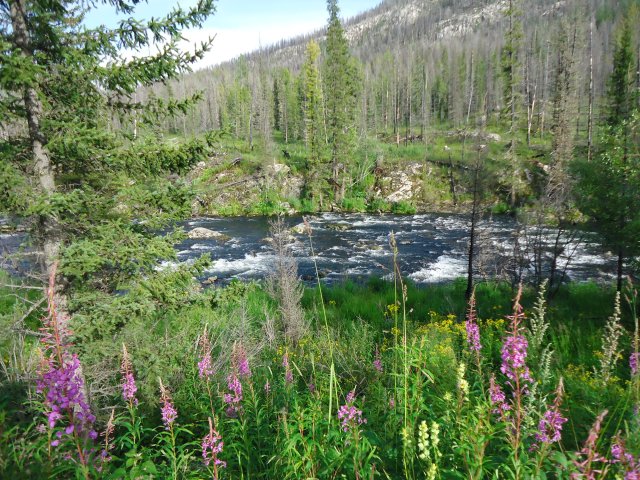 The health resort is located in Katon-Karagai district, East Kazakhstan region, 450 km from Ust-Kamenogorsk city, not far from intersection of four countries’ borders: Kazakhstan, Russia, Mongolia, and China, in the very heart of Altai mountains, at the height of 1760 m above the sea level. First of all you will need to get to Ust-Kamenogorsk, after all there is the nearest transport junction and airport, then you can get to the Kluchi in two ways: by bus or by car.
The health resort is located in Katon-Karagai district, East Kazakhstan region, 450 km from Ust-Kamenogorsk city, not far from intersection of four countries’ borders: Kazakhstan, Russia, Mongolia, and China, in the very heart of Altai mountains, at the height of 1760 m above the sea level. First of all you will need to get to Ust-Kamenogorsk, after all there is the nearest transport junction and airport, then you can get to the Kluchi in two ways: by bus or by car.
The water in Rakhmanovskiye Klyuchi, according to the modern chemical classification, refers to the group of brackish nitrogen-siliceous medicinal waters and is almost similar to waters in Belokurikha and Tskhaltubo health resorts, but substantially outweighs them in its healing capacity.
Radon water sedates the central nervous system, deepens sleep, and decreases the pain. Under the influence of it, the nerves regeneration and rehabilitation speeds up, and the course of inflammatory and trophic processes gets better.
Under the influence of general radon baths, the cardiovascular system’s activity gets more normal. In addition, these normalize the carbohydrate, adipose, and nitrogen metabolisms. As to drinking radon waters, these are used to cure diseases of gastrointestinal tract, and inactive gastroduodenal ulcer.
Bukhtarma artificial lake
 Bukhtarma artificial lake is located in East Kazakhstan amid Altai Mountains.
Bukhtarma artificial lake is located in East Kazakhstan amid Altai Mountains.
The lake was created by the Bukhtarma hydroelectric power plant on Irtysh river. Filling it with water started in 1960. Since 1966, it has been regulating the flow. The artificial lake consists of two sites: the river one — along Irtysh valley – and the Zaisan lake site where a broad stretch emerged. For fishing enthusiasts Bukhtyrma reservoir is a fount of fish of different types. Each fisherman can easily catch in this pond not only ripus, pike, zander and perch, but also grayling, ide, carp, trout, burbot, crucian carp, bream and many other kinds of fish. In addition to fishing Buhtyrma reservoir attracts tourists with the opportunity to luxuriate for a while the sandy beaches and to swim in the clear waters of this man-made lake, surrounded by mountains and tall pines. Recreation bases on the shore of the Bukhtarma reservoir are located in 80-150 km from the city of Ust-Kamenogorsk, you will need to get to Ust-Kamenogorsk by any transport of your choice - bus, train or flights, then from Ust-Kamenogorsk to Bukhtarma by bus or train.
At the artificial lake, lots of recreation sites offer their services, including “Blue Gulf”, “Altai Bay”, “Ayuda” and other vacation houses.
Kapshagai artificial lake
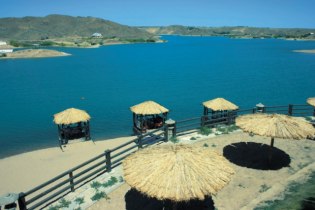 Kapshagai artificial lake is one of the largest in Kazakhstan and one of the most popular recreation places for Almaty residents.The Kapchagay reservoir is located in the Ili Valley in the territory of the Almaty region. It is very easy to get from Almaty to the resort center – the distance between the cities is 75 km. From Almaty you can buy a train ticket, take a bus or a taxi.
Kapshagai artificial lake is one of the largest in Kazakhstan and one of the most popular recreation places for Almaty residents.The Kapchagay reservoir is located in the Ili Valley in the territory of the Almaty region. It is very easy to get from Almaty to the resort center – the distance between the cities is 75 km. From Almaty you can buy a train ticket, take a bus or a taxi.
Kapshagai artificial lake was created for regulating the flow of Ili river through the construction of the dumb and hydroelectric power plant (1965-1980) in the neighborhood of Kapshagai town. Filling with water started in 1970.
The water temperature in May-June is 18 to 20 degrees, in July-August - 22 to 28, in September - 18 to 20. The best-arranged is its northern shore where multiple recreation areas are located. The prestigious are “Yermin” and “Golden Sands”.
Big Almaty Lake
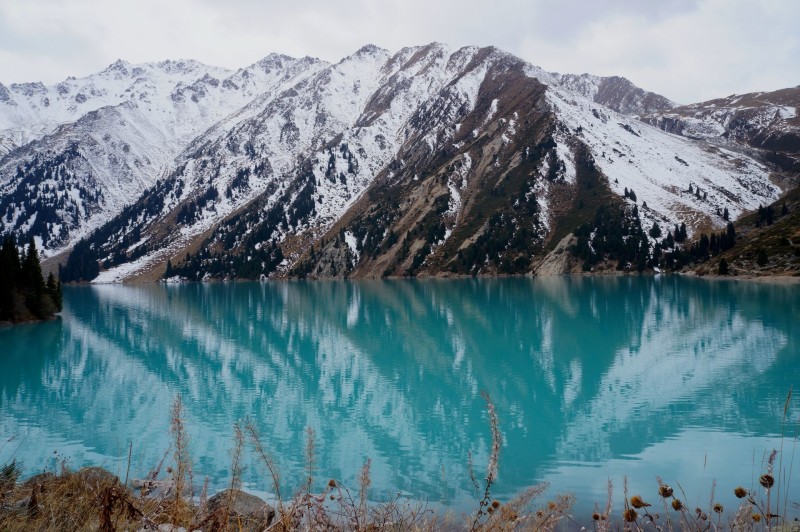 Big Almaty Lake emerged resulting from the ancient glacier’s activity. In retracting, it left moraine, a tumble of fragmentary material: crushed rock, stones, earth. Afterwards, the melt water filled the formed basin. High-altitude reservoir, located in Zailiyskiy Alatau at an altitude of 2511 [1] m above sea level, 15 km south of the center of Almaty. In order to visit the Big Almaty Lake, you need to get to Almaty by any means of transport of your choice - bus, train, private car or flights, then to the place of destination you will have to travel by taxi or by your own car.
Big Almaty Lake emerged resulting from the ancient glacier’s activity. In retracting, it left moraine, a tumble of fragmentary material: crushed rock, stones, earth. Afterwards, the melt water filled the formed basin. High-altitude reservoir, located in Zailiyskiy Alatau at an altitude of 2511 [1] m above sea level, 15 km south of the center of Almaty. In order to visit the Big Almaty Lake, you need to get to Almaty by any means of transport of your choice - bus, train, private car or flights, then to the place of destination you will have to travel by taxi or by your own car.
The water temperature in summer is 10 to12◦ С
Three main peaks rise above the lake. They can be seen from the northern end of the dumb: Sovietov peak (4 317 m) – in the south-east; Ozyorny (4 110 m) – in the south, up the river valley, while the wood-covered slopes of Tourist peak (3 954 m) are to the south-west of the lake. Depending on season, the lake changes its color – from light-green to turquoise-blue.
Overhead, at the height of 2 700 m above the blue cup of the lake, in the very ancient glacier valley, there is the observatory township with spectacular domes which is named “Tien-Shan Astronomy Observatory”. And still higher, at the height of 3 300 m, close to the Zhassylkezen Pass, the Cosmic Rays Studies Station is located (CosmoStation).
Big Almaty Lake is justifiably considered to be a popular holiday destination.
Issyk Lake
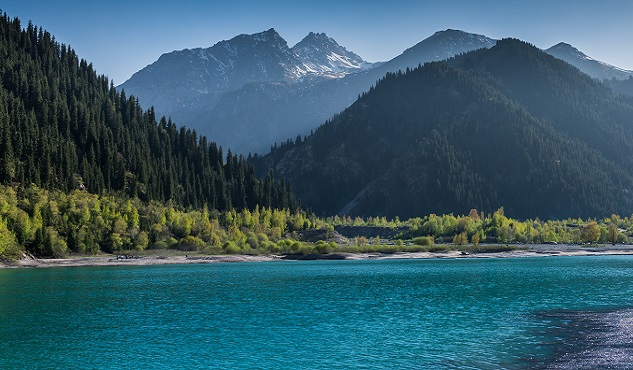 Literally 60 km from Almaty, the small town of Issyk is comfortably located, named after a local landmark - Lake Issyk, hidden in one of the picturesque gorges of the Trans-Ili Alatau, at an altitude of 1,800 meters above sea level.
Literally 60 km from Almaty, the small town of Issyk is comfortably located, named after a local landmark - Lake Issyk, hidden in one of the picturesque gorges of the Trans-Ili Alatau, at an altitude of 1,800 meters above sea level.
According to geologists, it was formed about 8–10 thousand years ago as a result of a tremendous mountain fall, which created a natural dam about 300 meters high. Initially, Issyk’s length was 1,850 m, width 500 m, depth 50–79 m. The water was green and blue, the fish was not found there.
Currently, Issyk Lake is again one of the tourist attractions of Kazakhstan and is of recreational importance.
Charyn Canyon
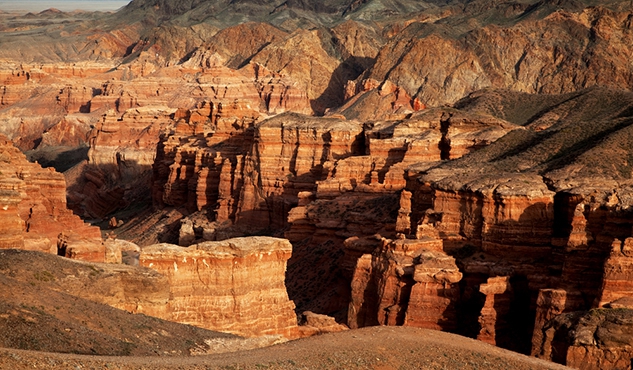 The canyon stretches for 154 km along the Charyn River in Kazakhstan. The canyon is located 195 km east of Almaty, not far from the border with China. The canyon enters the territory of the Charyn National Park, formed on February 23, 2004.
The canyon stretches for 154 km along the Charyn River in Kazakhstan. The canyon is located 195 km east of Almaty, not far from the border with China. The canyon enters the territory of the Charyn National Park, formed on February 23, 2004.
Charyn Canyon – a natural monument, built of sedimentary rocks, whose age is about 12 million years. The height of the steep canyon mountains reaches 150-300 m.
The most interesting place for tourists is the so-called Valley of castles, whose length is about 2 km, width - 20-80 m.
In the bosom of the canyon, a grove of a relict species of ash has survived, which survived the era of glaciation - Sogdian ash. There is another similar grove only in North America. Since 1964, Ash Grove has been declared a natural monument. Also of great interest is the turang grove - the grove of the Asian poplar.
The park is home to a large number of rare and endangered species of animals listed in the Red Book.
Lake Kaiyndy
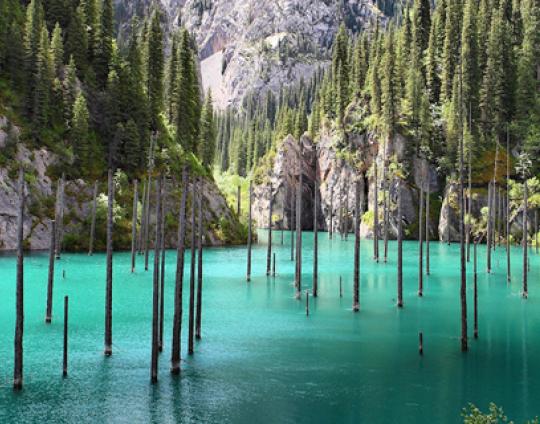 The lake is located in the Almaty region of Kazakhstan, a popular place of tourism in one of the Kungey Alatau gorges. The main attraction of the lake is spruce, rising straight from the water.
The lake is located in the Almaty region of Kazakhstan, a popular place of tourism in one of the Kungey Alatau gorges. The main attraction of the lake is spruce, rising straight from the water.
The lake was formed as a result of the Kemin earthquake in January 1911. At the end of the 1980s, the lake area decreased after passing mudflow.
The water in the lake is bright blue and transparent. It is so pure that a trout lives in it.
However, those who saw the reservoir with their own eyes, say that it is constantly changing color, becoming something turquoise, then emerald. Minerals that are in abundance under water give a hue to the contents of the lake.
Getting to one of the most unusual lakes in Kazakhstan is not so easy. The landmark is located not far from Almaty - only 130 kilometers, but you can drive there by car with a large cross-country ability. To the lake itself is suitable only on foot.
Western Tien Shan
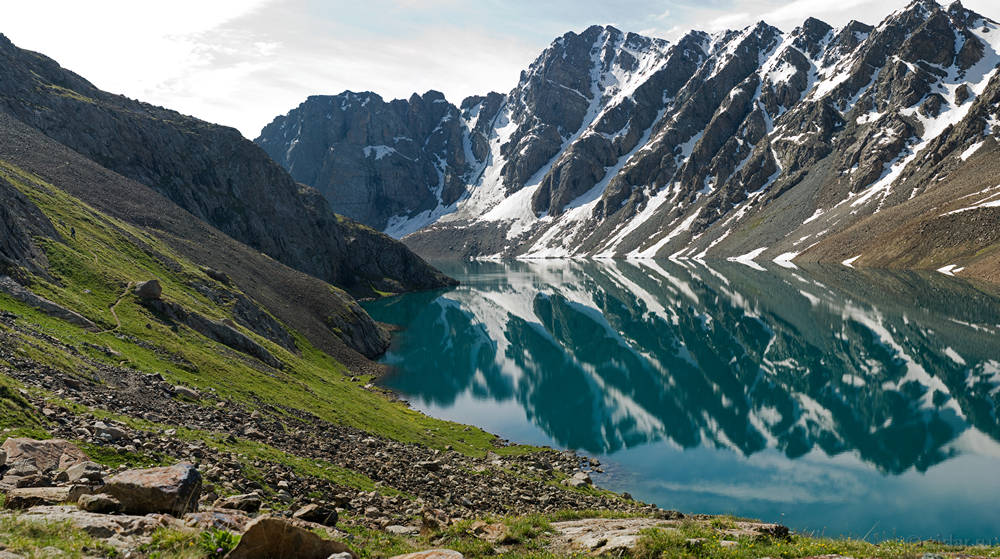 The western Tien Shan includes the Kyrgyz range, the Talas Ala-Too, the Chatkal range, the Kuramin range, the Pskem range, the Ugam range and the Karatau.
The western Tien Shan includes the Kyrgyz range, the Talas Ala-Too, the Chatkal range, the Kuramin range, the Pskem range, the Ugam range and the Karatau.
Aksu-Dzhabagy National Reserve is famous for its juniper forests, lush alpine meadows, deep streams and rivers, harsh rocks – all these beauties occupy an area of about 850 sq. km. More than 1,400 plant species grow in the protected area, many of which are listed in the Red Book. More than 238 species of birds and 42 species of animals live in Aksu-Dzhabagly, many of which are on the verge of extinction (Egyptian vulture, golden eagle, black stork, brown bear, argali, decorative spider, snow leopard, Central Asian lynx and many others).
On the border of Kazakhstan, Kyrgyzstan and China, the world-famous mountain peak Khan-Tengri (7.014 m) is located. Its dazzling beauty attracts not only climbers, but also adventure seekers.
The Chu, Talas and Syr Darya rivers begin in the Western Tien Shan.
Due to the distance from the oceans, the climate is sharply continental. The average air temperature in the southwestern foothills is –3– –5°C in January and 20–25°C in July. The average temperature in the upper belt is -10 - -15°C in January and 10-15°C in July.
Ancient city of Turkestan
 Mausoleum of Khoja Ahmed Yasawi – a mausoleum on the grave of the poet and preacher Khoja Ahmed Yasawi, located in the city of Turkestan in the Turkestan region of Kazakhstan. It is a central object in the territory of the Historical and Cultural Museum-Reserve "Hazret-Sultan". The mausoleum of Khoja Ahmed Yasawi is included in the UNESCO World Heritage List. The modern mausoleum was built on the burial site of a Sufi poet Khoja Ahmed Yasawi, who had great authority among Muslims in the region and had a significant influence on Islam in Central Asia.
Mausoleum of Khoja Ahmed Yasawi – a mausoleum on the grave of the poet and preacher Khoja Ahmed Yasawi, located in the city of Turkestan in the Turkestan region of Kazakhstan. It is a central object in the territory of the Historical and Cultural Museum-Reserve "Hazret-Sultan". The mausoleum of Khoja Ahmed Yasawi is included in the UNESCO World Heritage List. The modern mausoleum was built on the burial site of a Sufi poet Khoja Ahmed Yasawi, who had great authority among Muslims in the region and had a significant influence on Islam in Central Asia.
He died in 1166 and was buried with great honor in a small mausoleum. The present mausoleum was erected 233 years after his death by order of Tamerlane. At the time of the Kazakh Khanate, the mausoleum was the residence of the Kazakh khans. Today, the mausoleum is one of the most significant and well-preserved buildings of that era.
The mausoleum has one of the largest brick domes in Central Asia. One of the main attractions of this mausoleum is the Taykazan cauldron - the largest water bowl in the entire eastern Muslim world. According to legend, she was cast from an alloy of seven metals in the village of Karnak, 25 kilometers from the city of Turkestan. The surface of the Taykazan is decorated with three belts of embossed inscriptions against a background of floral ornament. The handles of the boiler have the appearance of lotus flowers and alternate with round protrusions. Since 1934, this bowl was exhibited in Leningrad in the State Hermitage Museum. In 1988, the Taykazan was returned to the mausoleum.
Mausoleum of Arystan Bab
 Arystanbab is a religious mystic and preacher, teacher and spiritual mentor of Khoja Ahmed Yasawi.
Arystanbab is a religious mystic and preacher, teacher and spiritual mentor of Khoja Ahmed Yasawi.
As the legend says, by order of Tamerlane, over the grave of Khoja Ahmed Yasawi the construction of a mosque began (1338-1405). All attempts to build walls failed, a strong storm demolished them, according to another version it was the appearance of a green bull that destroyed everything. The saint who appeared in Timur’s dream said that first you need to build a mausoleum over the grave of Saint Arystan-Bab, and then over the grave of Khoja Ahmed Yasawi. And Timur did it. Therefore, pilgrims first visit the mausoleum of the teacher Arystan-Bab, and then the mausoleum of Khoja Ahmed Yasavi.
The mausoleum is located 150 kilometers from the city of Shymkent, not far from the ancient city of Otrar and the village of Shaulder, Otyrar district. Architectural monument. One of the main places of worship of Muslims in the region. Since 1982, the mausoleum of Arystan-Bab has been under state protection.
At present, a mausoleum measuring 35×12 m stands above the grave of Arystanbab and is made of burnt brick on alabaster solution in the front masonry of walls. The long main facade is flanked by two minarets and decorated with figured brickwork. The surviving building was built in the first decade of the XX century, it is a multi-chamber complex of transverse-axial composition.
In the mausoleum under the glass presented the Koran - a magnificent example of medieval calligraphic art.




